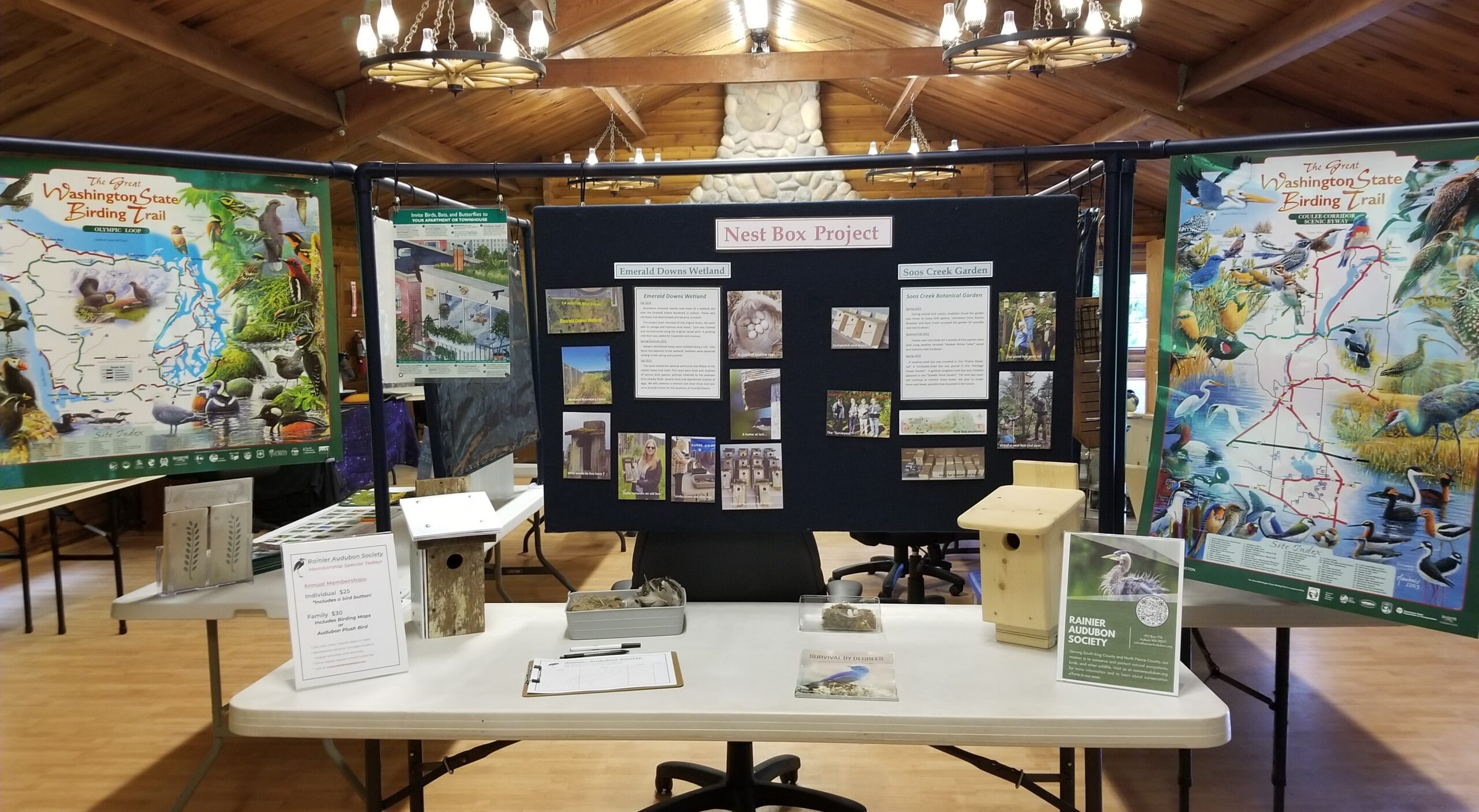
Mewsings from Millie – January, 2024

The time is upon us when everyone is thinking about new beginnings. It got me to wondering about baby birds. What kind of condition are they in when they hatch, and how long does it take before they take that first big leap of leaving the nest?
Let’s take a look at some of our most common backyard birds and find out.
The American Robin begins its life in a beautiful sky blue or blue-green egg. The chicks are helpless at birth, mostly covered with sparse whitish down. It will be thirteen days before they leave the nest.
The egg of the Black-capped Chickadee is white with reddish-brown spots. The chicks are born with eyes closed and naked except for six small patches of mouse-gray downy feathers on the back and the head. They will leave the nest in twelve to sixteen days.
Northern Flickers lay eggs that are pure white. The chicks hatch naked with pink skin, eyes closed, and sporting a sharp egg tooth at the tip of their bills. They are very clumsy, and it will take twenty-four to twenty-seven days for them to fledge.
The egg of the striking Steller’s Jay is bluish-green with brown, purplish or olive spots. The just-hatched babies look like tiny plucked chickens! They will leave the nest in sixteen days.
The Red-breasted Nuthatch lays a white, creamy or pinkish-white egg speckled with reddish-brown. The chicks are born naked and helpless but will take off from their nest in eighteen to twenty-one days.
The Bewick’s Wren begins life in a white egg with reddish-brown or purplish spots. The chicks only weigh 1.4 grams, have their eyes closed, and have pink skin with sparse down. They’ll be ready to take that giant leap, though, in fourteen to sixteen days.
House Finches lay eggs that are pale blue to white speckled with fine black and pale purple. The babies are naked except for sparse white down along the feather tracts. Their eyes are closed, and they are also clumsy. They’ll be ready to attempt flight, though, in twelve to nineteen days.
The colorful eggs of the Dark-eyed Junco can be white, gray, pale bluish-white, or pale greenish-white speckled with brown, gray or green. The chicks are naked except for dark gray down on the back. Their eyes are closed. They will be ready to leave the nest in ten to thirteen days.
The American Goldfinch lays eggs that are pale bluish-white sometimes with faint brown spots around the large end. The chicks are helpless with wisps of grayish down. They will fledge in eleven to thirteen days.
Spotted Towhees begin life in an egg that is white, gray, green or pinkish spotted with reddish-brown, purple or gray. The babies are naked except for tufts of grayish down, they are clumsy, and their eyes are closed. They will leave the nest in ten to twelve days.
Downy Woodpeckers lay pure white eggs just like the Flicker. The chicks are naked with pink skin, and they also have a sharp egg tooth at the tips of their bills. Their eyes are closed. They will be ready to attempt flight in eighteen to twenty-one days.
Anna’s Hummingbirds lay coffee-bean-sized eggs that are white. The tiny hummers hatch with their eyes closed, very little down, and are virtually helpless. They will be ready to say goodbye to mom in twenty days.
The American Crow lays eggs that are pale bluish-green to olive green with blotches of brown and gray toward the large end. The chicks are naked except for tufts of grayish down. Their eyes are closed and they, too, are clumsy. It will take twenty to twenty to forty days before they are ready to leave the nest.
So as you contemplate new beginnings or perhaps lifestyle changes this time of year, think of these tiny beings and the miracle that is their survival. Then come spring, join with nature and celebrate the magic that is the life of birds.
Until next time, Millie, the Muse of Mews



